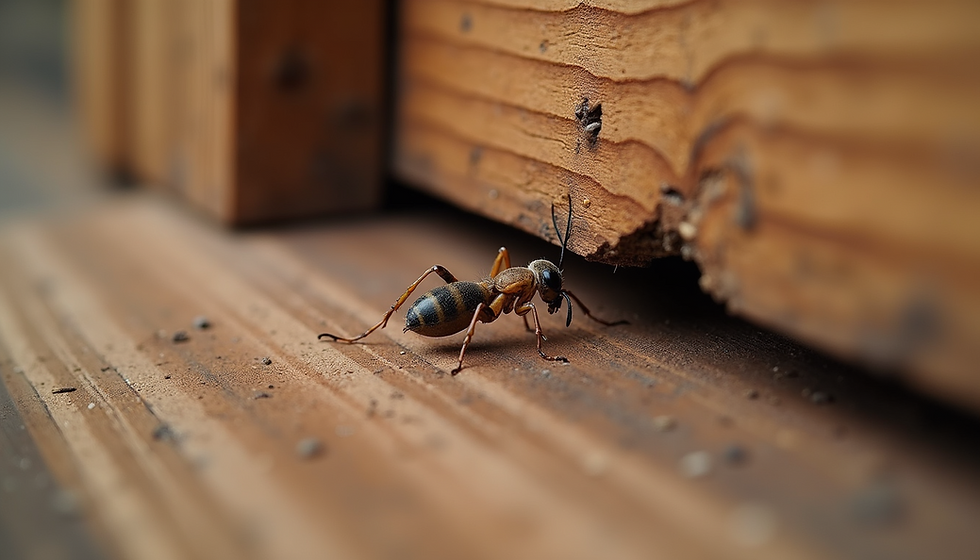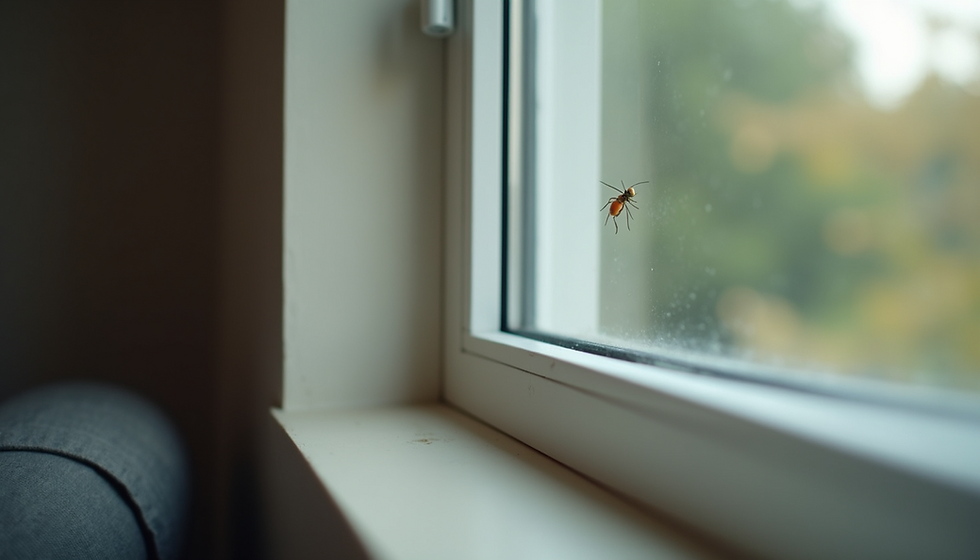Best Practices for Keeping Your Home Pest-Free
- Gorilla Pest

- Oct 13
- 3 min read
Keeping your home free from pests is essential for maintaining a healthy and comfortable living environment. Pests like ants, cockroaches, rodents, and termites can cause damage to your property and pose health risks to your family. Fortunately, there are many effective strategies you can use to prevent infestations and keep your home pest-free all year round.
Creating a Pest-Free Home Environment
The first step in maintaining a pest-free home is to create an environment that is unattractive and inaccessible to pests. This involves regular cleaning, proper food storage, and eliminating potential hiding spots.
Keep your home clean: Pests are attracted to food crumbs, spills, and garbage. Clean kitchen counters, sweep floors, and wash dishes promptly. Take out the trash regularly and use sealed bins.
Store food properly: Use airtight containers for pantry items like flour, sugar, and cereals. Avoid leaving pet food out overnight.
Seal entry points: Inspect your home for cracks, gaps, and holes around windows, doors, and the foundation. Use caulk or weatherstripping to seal these openings.
Reduce moisture: Many pests thrive in damp environments. Fix leaky pipes, use dehumidifiers in basements, and ensure proper ventilation in bathrooms and kitchens.
By following these simple steps, you can significantly reduce the chances of pests entering your home.

Effective Outdoor Maintenance for a Pest-Free Home
Your home's exterior plays a crucial role in pest prevention. Pests often originate outside and find their way indoors through unprotected areas. Maintaining your yard and the perimeter of your home can help keep pests at bay.
Trim vegetation: Keep bushes, trees, and shrubs trimmed and away from your home's walls. Overgrown plants provide shelter and pathways for pests.
Remove standing water: Eliminate sources of stagnant water such as clogged gutters, birdbaths, and plant saucers. Mosquitoes and other insects breed in standing water.
Store firewood properly: Keep firewood elevated and away from your home to prevent termites and rodents from nesting.
Maintain mulch and soil: Avoid piling mulch directly against your foundation. Use gravel or other materials that do not retain moisture.
Regular outdoor maintenance is a proactive way to reduce pest populations near your home and prevent infestations.

How Much Does It Cost to Have Pest Control Out?
Hiring professional pest control services is often necessary when infestations become severe or difficult to manage on your own. The cost of pest control varies depending on several factors:
Type of pest: Different pests require different treatment methods. For example, termite control is usually more expensive than ant control.
Size of the property: Larger homes or properties with extensive landscaping may cost more to treat.
Frequency of service: One-time treatments are less expensive than ongoing maintenance plans.
Severity of infestation: Heavily infested homes may require multiple visits and more intensive treatments.
On average, a basic pest control service can range from $150 to $300 per visit. For ongoing protection, many homeowners opt for residential pest management plans that offer regular inspections and treatments at a fixed cost.
Investing in professional pest control can save you money in the long run by preventing costly damage and health issues.

Natural and DIY Pest Control Methods
If you prefer to avoid chemicals or want to supplement professional services, there are several natural and DIY methods to keep pests away.
Essential oils: Peppermint, eucalyptus, and tea tree oils repel many insects. Mix a few drops with water and spray around entry points.
Diatomaceous earth: This natural powder damages the exoskeleton of insects like ants and fleas, causing them to dehydrate.
Homemade traps: Use sugar and borax mixtures to attract and kill ants, or set up sticky traps for flying insects.
Beneficial insects: Introducing ladybugs or praying mantises can help control aphids and other garden pests.
While these methods can be effective, they often work best as part of a comprehensive pest control strategy.
Long-Term Strategies for a Pest-Free Home
Maintaining a pest-free home requires ongoing effort and vigilance. Here are some long-term strategies to keep pests away:
Regular inspections: Check your home monthly for signs of pests such as droppings, nests, or damage.
Maintain cleanliness: Continue daily cleaning routines and proper food storage.
Monitor moisture levels: Keep your home dry and well-ventilated.
Use professional services: Schedule regular visits with a trusted pest control company to catch problems early.
Educate household members: Make sure everyone understands the importance of pest prevention and follows best practices.
By combining these strategies, you can enjoy a comfortable, pest-free living space for years to come.

Taking proactive steps and staying consistent with pest prevention will protect your home and family from unwanted invaders. Whether you choose DIY methods or professional help, the key is to act early and maintain good habits.


